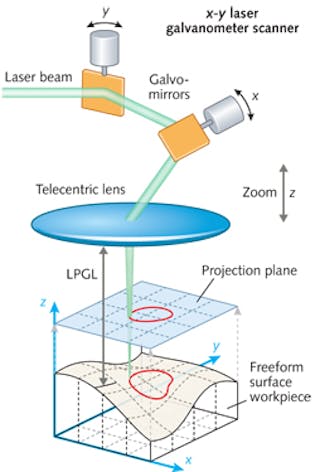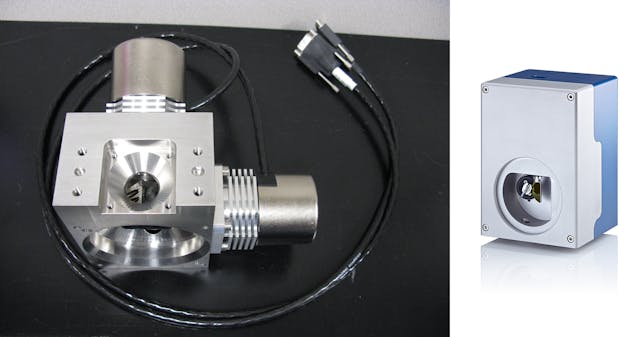Fixing Common Problems with Your Galvanometer Scanner: Tips and Tricks
Fixing Common Problems with Your Galvanometer Scanner: Tips and Tricks
Blog Article
How a Galvanometer Scanner Improves Efficiency in Laser Scanning Technologies
The assimilation of galvanometer scanners in laser scanning modern technologies stands for a crucial improvement in accuracy engineering. By helping with fast and precise changes of laser beam instructions, these devices considerably boost operational performance across numerous applications, from clinical imaging to industrial engraving. The underlying electromagnetic devices, paired with sophisticated comments systems, ensure real-time control and enhanced accuracy. However, as industries significantly demand higher efficiency standards, the question arises: what future developments might additionally boost the abilities of galvanometer scanners in this developing landscape?
Comprehending Galvanometer Scanners
A galvanometer scanner is an innovative tool that leverages electromagnetic concepts to attain exact angular activity of mirrors or various other reflective surfaces. These scanners operate through the communication of an electrical current and an electromagnetic field, enabling exact and fast positioning. This modern technology is important in applications requiring high-speed scanning, such as laser inscription, optical interaction, and medical imaging.

Galvanometer scanners are typically identified by their rapid feedback times and high angular resolution, making them ideal for applications that demand quick movements and exact placing. Their reliability and efficiency make them an important element in contemporary laser scanning technologies, adding considerably to developments in different areas, including manufacturing, medical care, and telecommunications.
Mechanism of Laser Beam Control

The control mechanism depends on closed-loop responses systems that constantly keep track of the light beam's setting. The signals from optical sensing units give real-time data to the control system, enabling rapid changes to preserve precision. This is crucial in applications where also mild variances can compromise the quality of the scan or engraving.
Furthermore, the galvanometer's action time is extremely important; high-speed electric motors enable quick movements, guaranteeing that the laser light beam can quickly trace complex patterns or carry out intricate operations. The combination of electronic signal processing additionally enhances the responsiveness and precision of the galvanometer scanner. On the whole, the mechanism of laser beam control via galvanometer scanners exemplifies the fusion of innovative engineering and modern technology, yielding high-performance outcomes in laser scanning applications.
Benefits of Improved Accuracy
Boosted accuracy in laser scanning modern technologies uses considerable advantages throughout numerous applications, from commercial production to medical treatments. The combination of galvanometer scanners enables very precise beam positioning, which is crucial for tasks requiring precise information. This enhanced precision makes certain that the laser can target specific locations with very little discrepancy, causing superior top quality outcomes.
In commercial contexts, precise laser scanning leads to boosted item uniformity and decreased product waste. Parts manufactured with high precision are much less most likely to call for rework, therefore boosting efficiency and decreasing functional costs. In medical applications, the precision of laser procedures can considerably influence patient outcomes. As an example, in laser surgical procedure, accurate targeting minimizes damage to bordering tissues, leading to quicker recuperation times and less difficulties.
Additionally, improved precision promotes innovative applications such as 3D imaging and microfabrication, where even minute errors can cause significant errors. By offering repeatable and reputable laser positioning, galvanometer scanners add to the overall performance and effectiveness of laser systems. In recap, the benefits of boosted precision not just boost functional efficiency however also boost the standards of quality and security in different fields.
Applications in Different Industries
The flexibility of galvanometer scanners in laser scanning technologies extends throughout multiple markets, each gaining from the accuracy they give. In the medical field, these scanners are critical in applications such as laser surgery and imaging, permitting for very precise targeting of cells while minimizing damages to bordering locations - galvanometer scanner. Their fast reaction and great resolution are vital in generating top notch results
In the production industry, galvanometer scanners improve procedures like laser inscription and cutting. Their capacity to quickly guide laser beams onto surface areas allows efficient assembly line, boosting rate and precision in producing complex layouts or parts.
The vehicle industry additionally utilizes on galvanometer modern technology for high quality control and examinations (galvanometer scanner). By using high-speed scanning, makers can detect flaws in assemblies or materials, guaranteeing that products meet strict criteria
Furthermore, in the home entertainment sector, galvanometer scanners are utilized in laser light programs and display screens, providing dynamic visual experiences with specific control over laser like this movements.
Future Trends in Laser Scanning
Arising modern technologies are poised to change the landscape of laser scanning, with galvanometer scanners at the center of this improvement. As sectors significantly demand precision and effectiveness, the evolution of galvanometer modern technology will certainly drive substantial advancements in laser scanning applications.
Future trends suggest a growing assimilation of artificial knowledge and artificial intelligence formulas, which will certainly enhance information processing abilities and automate decision-making in real-time. This harmony will certainly enable for a lot more innovative evaluation of scanned data, bring about boosted precision in applications such as 3D modeling and autonomous navigating.
Additionally, the miniaturization of components and the development of innovative products will certainly add to lighter, a lot more portable laser scanning systems. This portability will certainly increase the reach of laser scanning modern technologies right into formerly hard to reach environments, such as remote terrain and detailed architectural rooms.
The rise of augmented truth (AR) and virtual reality (VIRTUAL REALITY) applications will likewise form the future of laser scanning. By combining galvanometer scanners with AR and VR, individuals will take advantage of immersive experiences that enhance visualization and task preparation.
Final Thought
Finally, galvanometer scanners play a crucial function in optimizing laser scanning modern technologies through their specific control of beam of light direction and rapid angular changes. The assimilation of advanced feedback systems and optical sensors dramatically improves functional rate and accuracy, resulting in improved end results in applications such as laser inscription and clinical imaging. As markets increasingly embrace these innovations, the recurring advancements in galvanometer scanner designs are anticipated to additional boost efficiency requirements and broaden application possibilities.
The combination of galvanometer scanners in laser scanning innovations represents a pivotal improvement in precision engineering. In general, the device of laser beam control through galvanometer scanners exhibits the combination of advanced engineering and innovation, producing high-performance results in laser scanning applications.
By offering repeatable and trusted laser positioning, galvanometer scanners contribute to the general effectiveness and performance of laser systems.The versatility of galvanometer find this scanners in laser scanning technologies expands across multiple markets, each profiting from the accuracy they offer.In verdict, galvanometer scanners play a crucial role in maximizing laser scanning innovations through their accurate control of beam of light instructions click here for info and rapid angular adjustments.
Report this page